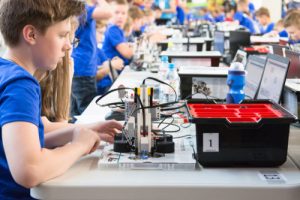
U.S. Rep. Elise Stefanik (R-NY) on June 18 cosponsored two bipartisan bills to expand science, technology, engineering, arts, and math (STEAM) education programs that will empower the next generation of America’s workforce to think creatively and solve new problems.
“Our North Country economy, and our 21st century economy as a whole, will continue to benefit significantly from STEAM education in schools,” Rep. Stefanik said on June 19.
Rep. Stefanik introduced the Building STEAM Education Act of 2019, H.R. 3308, with bill sponsor U.S. Rep. Suzanne Bonamici (D-OR) to expand resources and grant opportunities that support STEAM education programs. The members co-chair the House STEAM Caucus.
The congresswoman also introduced the STEM to STEAM Act of 2019, H.R. 3321, with bill sponsor U.S. Rep. Jim Langevin (D-RI) to amend the STEM Education Act of 2015 to require the National Science Foundation (NSF) to promote the integration of art and design in science, technology, engineering and math (STEM) education.
“I’m proud to co-lead and support both the Building STEAM Education Act and STEM to STEAM Act with my colleagues to help the next generation succeed in their future careers,” said Rep. Stefanik.
If enacted, H.R. 3308 would require the STEM Education Advisory Panel to consider ways to integrate art and design in STEM education programs to promote innovation, according to a one-page summary of the bill.
H.R. 3308 also would direct NSF to award Mathematics and Science Education Partnerships grants to develop STEM educational curriculums, among other provisions.
Meanwhile, H.R. 3321 would require NSF to award grants that support the design and testing of informal STEAM programs to improve educational outcomes, advance the field of STEAM education, and promote creativity and innovation, according to another bill summary.
“Modern education has taken great strides in incorporating artistic expression and design into STEM,” Rep. Stefanik said. “In order to create new solutions for complex problems, our students must be equipped to think in a creative and innovative fashion.”



